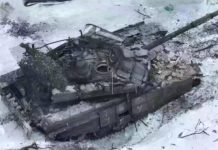Initially, Russia agreed to allow China to produce Su-27 fighters under license on the condition that the country had to order a large number of Su-27
In total, China had 76 Su-27SK aircraft imported directly from Russia. After that, the factory was built in China to produce about 300 Su-27SK with the designation J-11. However, soon after about 100 units were produced, Beijing announced the suspension of the contract. The reason given by the Chinese side was that Russia did not transfer the technology for manufacturing engines and avionics to it. In addition, the Russian-made fire control system is not suitable for Chinese-made missiles, so Beijing is forced to import missiles from Russia to equip the J-11 fighter.
International analysts said that the reason China unilaterally canceled the contract, because it was able to copy this fighter domestically at a much cheaper price than continuing to buy it from Russia. Further, Beijing is also planning to gradually export this fighter to directly compete with Russia’s Su27/30 series.

Chinese weapons are often promoted with high-end features, at half the price, even 1/3 of the fighter that it copies. Russia now recognized the real threat, but it was all too late. Even Russia’s discontinuance of some important electronic equipment has not made it difficult for China. Beijing immediately continued to assemble the J-11 alone without the need for components and materials from Russia. All equipment used to assemble the J-11 is domestically produced in China, including the engine.
The J-11 is a single-seat, twin-engine fighter based on the design of the Su-27. Like the original Soviet version, the J-11 is also an air superiority fighter. To date, a total of about 300 J-11 fighters have been produced in China, and production is still ongoing. The J-11 assembly plant is located in Shenyang, Northern China.
Variants of the Chinese J-11 include the J-11A, J-11B, J-11BS, J-11D, J-15 and J-16. They are all in service with the Chinese Air Force, and do not have any export versions. The first 100 J-11s were completed with Lyulka Saturn AL-31 engines in accordance with the terms of the contract. However, the next ones, including the J-11B and J-16, all use Chinese-made WS-10A engines.
The performance of the Chinese-made J-11 version is considered close to the performance of the Russian Su-27, even the J-11D version is said to be on par with the Russian Su-30SM. Chinese fighters have copied the entire design of the Su-27, so that it is indistinguishable with the naked eye and even the electronic equipment is similar to the original version.
Specifically, the Chinese J-11 is equipped with the NIIP Tikhomirov N001V radar, the GSh-30-1 automatic 30mm cannon and the Vympel NPO missile system – all of which are Russian-made. Regarding the J-11A fighter, this is basically the same version as the J-11, but with slight improvements in equipment with a new generation flight control system designed by China.
With the success in copying and upgrading the Su-27, it is clear that China does not need the original Su-27 anymore, and they did not hesitate to discard the Su-27 purchased from Russia, even though they are only halfway through their life cycle. From traumatic experiences in the past, in the sale of Su-35 to China, Russia soldered all important details, especially the engine of the Su-35. If intentionally opened, those parts will be destroyed. And China’s hope to once again “hack” the Su-35 like it did with the Su-27 will never come true.


















